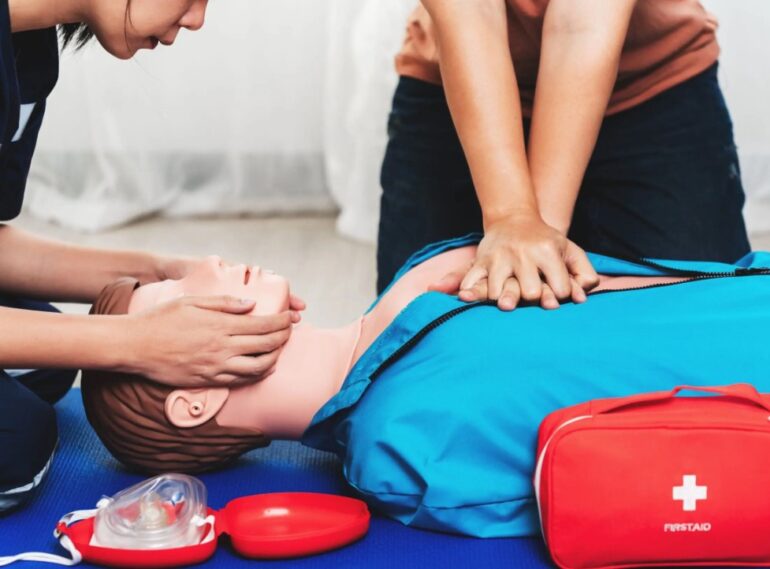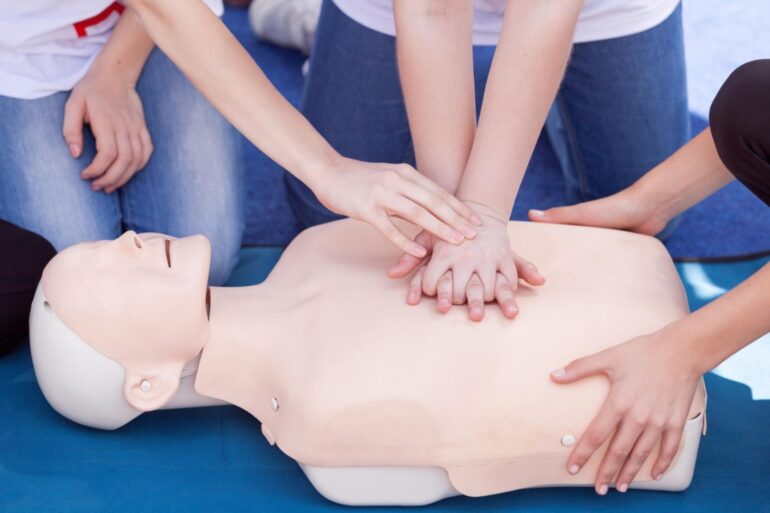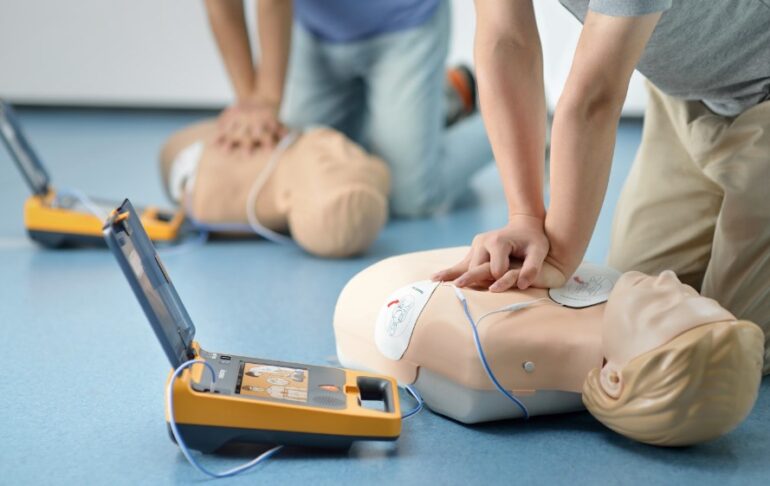
Cardiopulmonary resuscitation (CPR) can mean the difference between life and death. In an emergency, quick and effective actions save lives. Every second counts when someone stops breathing or their heart stops beating. Knowing the basics of CPR allows you to help when it matters most. Training for CPR is accessible and prepares you to step in confidently.
Preparation is key. It’s not enough to wait for an emergency to learn. Time is critical, and having the knowledge beforehand can be a life-saving decision. Take action now, so when a situation arises, you’re not left wondering what to do.
Key Points:
- Always assess the scene for safety.
- Check for responsiveness.
- Begin chest compressions immediately if the person is unresponsive.
- Call emergency services as soon as possible.
- Follow the ratio of 30 chest compressions to 2 breaths.
- Use an AED if available.
- Keep compressions hard and fast, at a rate of 100-120 per minute.
- Don’t stop CPR until help arrives or the person recovers.
Learning CPR Is Accessible
Many assume CPR training takes time or is difficult to access. With platforms like MyCPR NOW, there are no barriers to learning. The classes are available online, so you can practice at your own pace. You’ll gain skills that equip you to handle emergencies without the pressure of a formal classroom environment.
Take an online course today to make sure you are ready. Preparation makes all the difference when a life hangs in the balance.
Safety First
Before beginning CPR, ensure the scene is safe. You cannot help someone if you put yourself in danger. Stay alert and assess your surroundings. Hazards like traffic, fire, or electrical risks must be avoided. Prioritize safety, so you don’t become a victim yourself. After securing the area, check the person’s condition.

Checking for Responsiveness
Tap the person on the shoulder. Ask loudly, “Are you okay?” If there is no response, act quickly. Time wasted could be life lost. Ensure the person is not breathing and has no signs of circulation. Once confirmed, it’s time to act. Call for emergency help immediately and begin CPR.
Chest Compressions Save Lives
The heart pumps blood through chest compressions. Press hard and fast on the center of the chest. Ensure the person is lying flat on a firm surface. Use the heel of your hand to push down on their chest about two inches deep. Aim for a rhythm of 100-120 beats per minute. Consistency and speed are vital to keep blood flowing to the brain and vital organs.
Don’t be afraid to press firmly. Hesitation reduces the chances of survival. Your goal is to keep oxygen moving through the body until help arrives.
Airway and Breathing
Once you have completed 30 compressions, give two rescue breaths. Tilt the person’s head back slightly, pinch their nose, and cover their mouth with yours. Give one breath, wait for the chest to rise, then give the second. Repeat the cycle of 30 compressions and 2 breaths. Continue this until help arrives or the person shows signs of recovery.
If you’re uncomfortable with providing breaths, focus solely on chest compressions. Some CPR methods teach compression-only techniques, which still improve survival rates.
Using an AED
If an Automated External Defibrillator (AED) is available, use it. Follow the instructions provided with the device. Attach the pads to the person’s chest and let the machine analyze their heart rhythm. If it advises a shock, stand clear and press the shock button. Resume CPR immediately after the shock.
AEDs are user-friendly and found in many public spaces. Learning to use one can greatly enhance your ability to respond in an emergency.

Calling for Help
Dial emergency services as soon as possible. If someone is with you, assign them the task of calling while you perform CPR. If you’re alone, call first, then start compressions. Emergency professionals will guide you through the process while help is on the way.
Don’t Stop Until Help Arrives
CPR is exhausting, but it must continue until help arrives. Don’t stop unless the person regains consciousness or a professional takes over. Every compression keeps blood and oxygen flowing. The more consistently you act, the better the chances of survival.
Prepare yourself mentally for the physical effort. CPR requires focus and endurance. Knowing when to push and how hard is crucial for saving a life.
A Lifesaving Skill for Everyone
CPR is not just for professionals. Parents, teachers, coworkers—anyone can learn. The skills you gain last a lifetime and can be the difference in any emergency situation. CPR training empowers people to help others in a critical moment. The ability to act in seconds gives the victim the best chance of survival.
Emergencies happen unexpectedly. Don’t wait until it’s too late to learn. With a simple class, you can be ready when the time comes.
